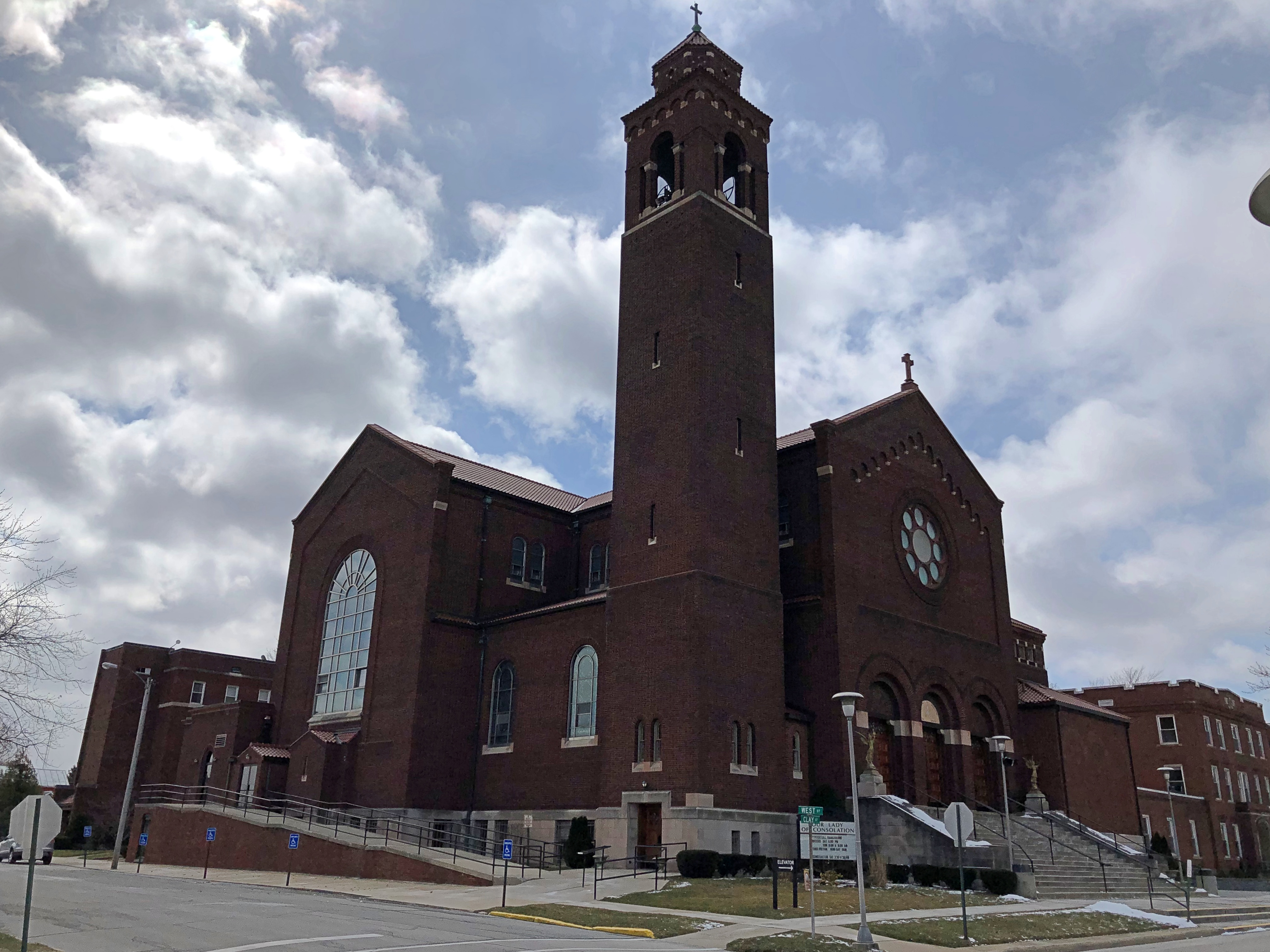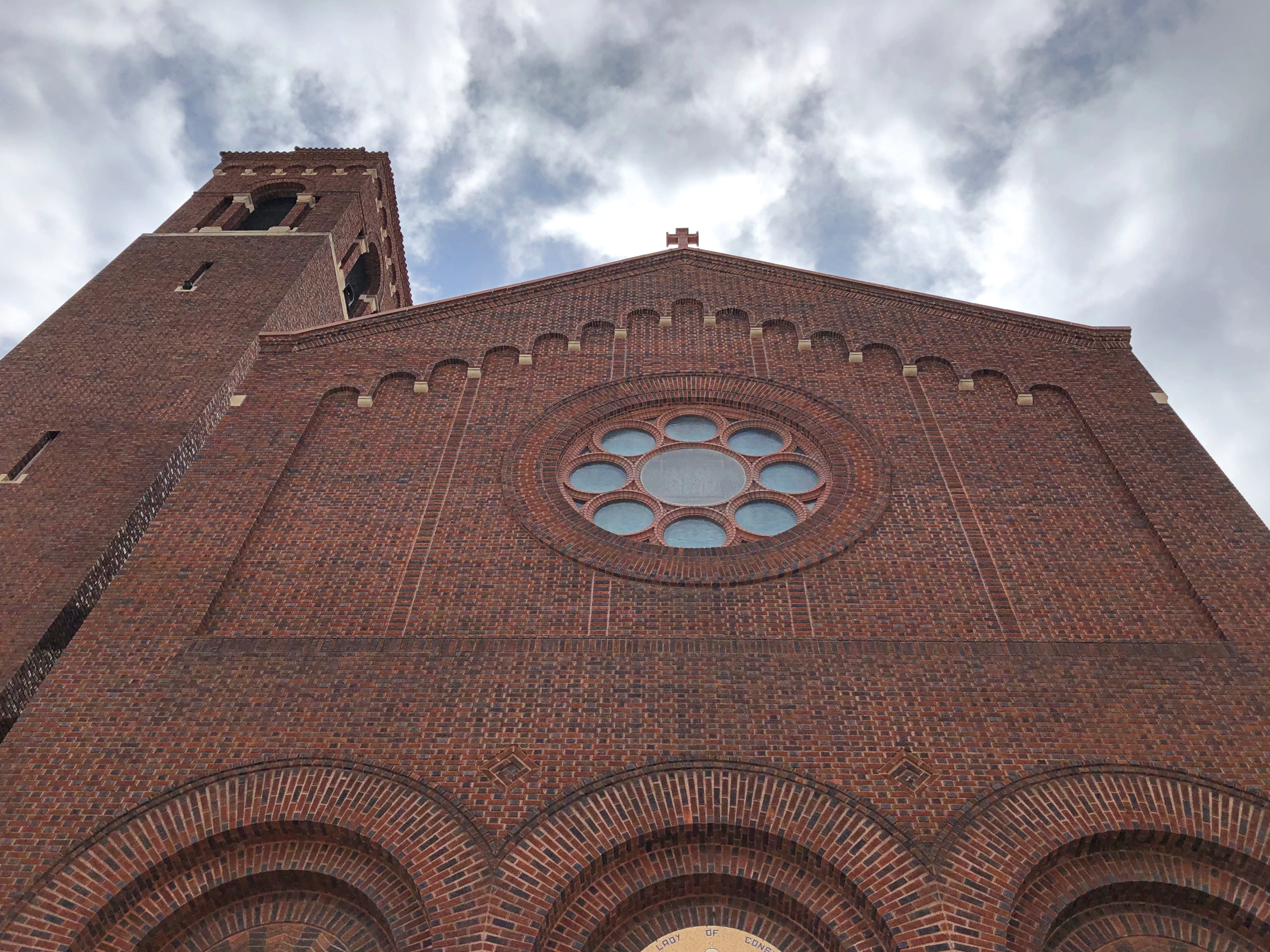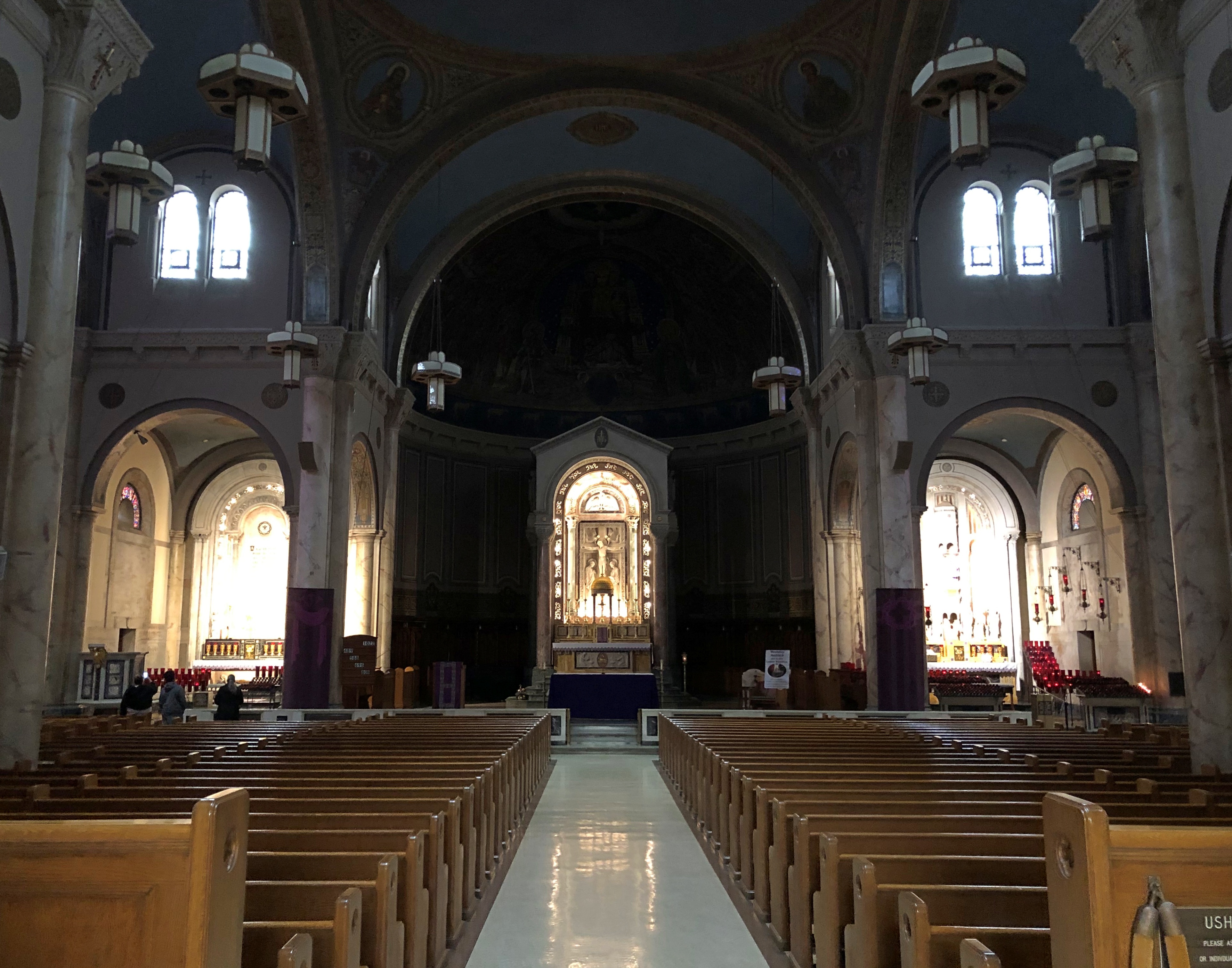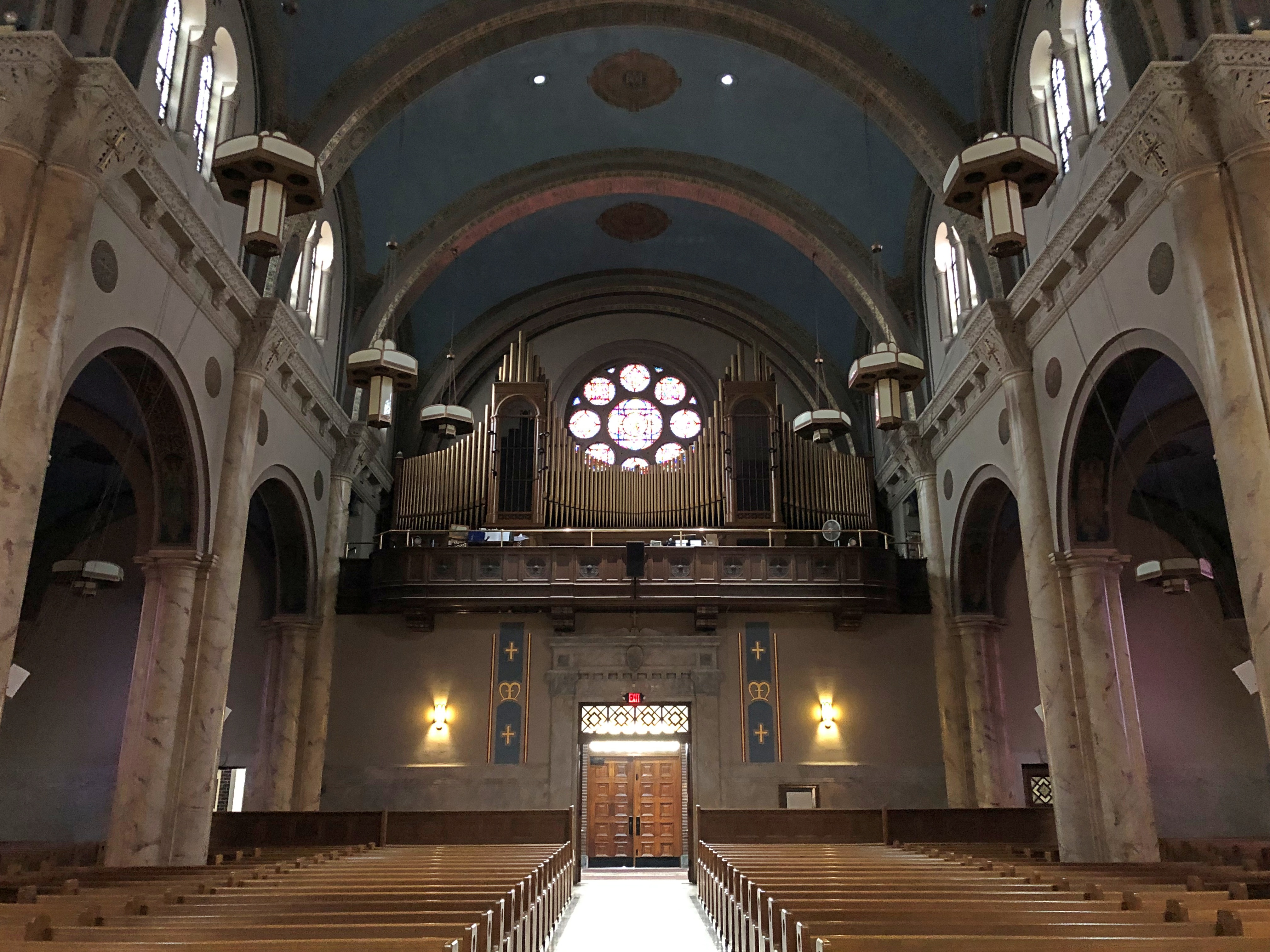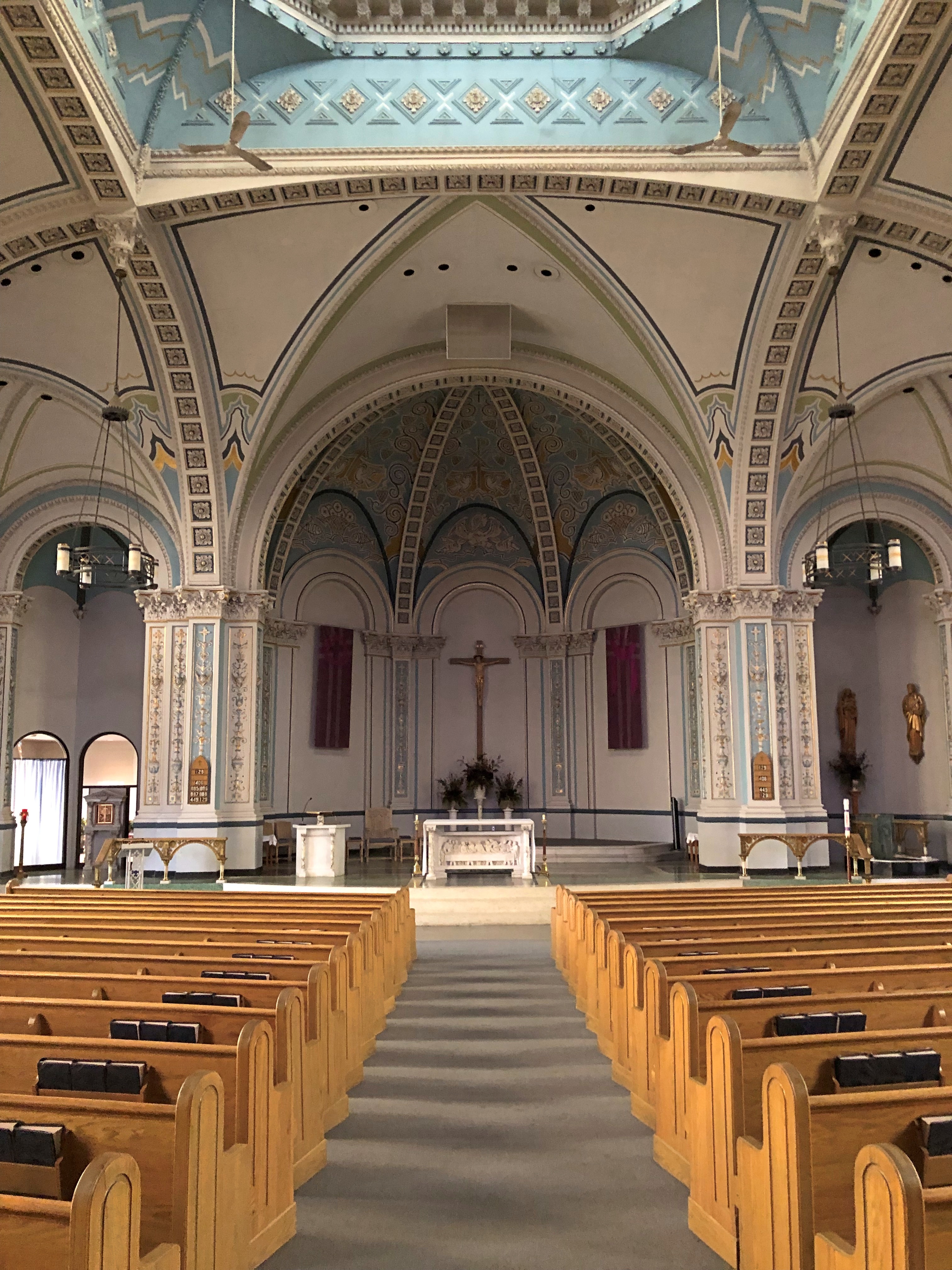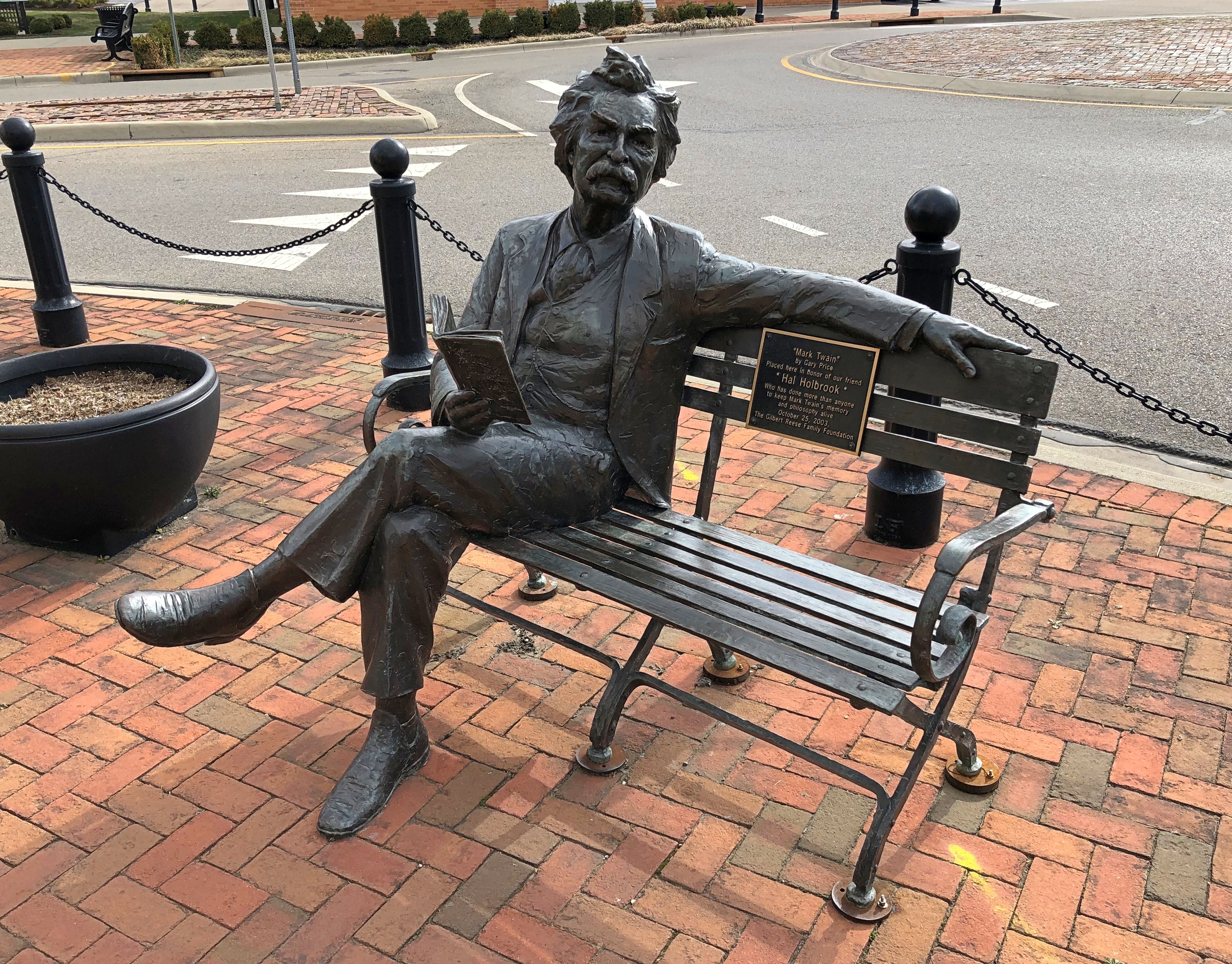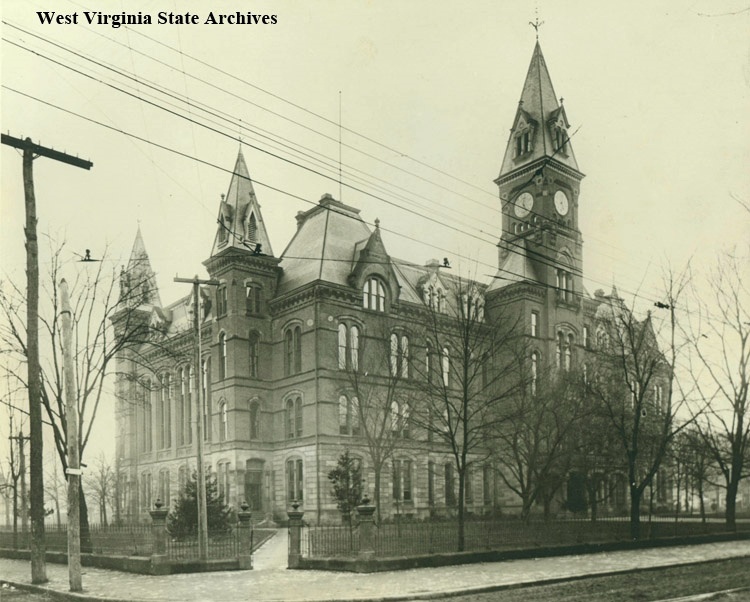One thing you’ll find in Moundsville, West Virginia, which is in the panhandle not far south of Wheeling, is a mound of impressive height – 62 feet. The Grave Creek Mound.
Look carefully enough and you’ll note that a footpath leads to the top. We were too tired for it at that moment, but it was a moot point anyway, since the Grave Creek Mound Archaeological Complex had just closed for the day when we arrived, though the gift shop was still open.
“The Grave Creek Mound is one of the largest Adena mounds and an impressive sight for any visitor to Moundsville,” says the West Virginia Department of Arts, Culture and History. “A massive undertaking, the total effort required the movement of more than 57,000 tons of sand and earth. Construction of the mound took place from about 250-150 B.C. and included multiple burials at different levels within the structure.
“Although Grave Creek Mound is today an isolated feature on the landscape, the flat area now occupied by the city of Moundsville was once covered with small and large mounds and associated earthworks. Unfortunately, these structures and many others all over the region have been destroyed by treasure-hunters and farmers who plowed over these in the past.”
The complex takes up a large town block in Moundsville, but even larger is the West Virginia Penitentiary, which is across the street from the mound. I’d asked the clerk at the Grave Creek Mound gift shop about its hulking presence, and she told me it had once been a state prison, but was long closed as a prison.
I was reminded instantly of Joliet, and it seems that the state of West Virginia took direct inspiration for its new pen from the Illinois prison.
“No architectural drawings of the West Virginia Penitentiary have been discovered, so an understanding of the plan developed by the Board of Directors must be obtained through their 1867 report, which details the procurement of a title for ten acres of land and a proposal to enclose about seven acres,” says the prison web site.

No cons have occupied this particular stony lonesome since the 1990s and now the old pen supports a cottage industry of tours, many stressing the macabre or supernatural stories clinging to a place that saw the execution of dozens of men. Seems like a good use for the imposing old structure, whatever you think of ghost stories. We’d have been in the market for a daylight (non-spook) tour ourselves, but again the timing was wrong.
We passed through Moundsville twice.
Once on a cold, windy day, then a few days later when it was warmer, when we were able to eat at a picnic shelter in a small park along the Ohio River. The park has a view of the elegant Moundsville Bridge, which crosses to Mead Township, Ohio.
Officially, it’s the Arch A. Moore Bridge, named for the longest-serving governor of West Virginia, who also did a spell in stir for corruption. Moore was in office, still unindicted, when the bridge opened in 1986. He was a Moundsville native son, so perhaps a little corruption isn’t enough to scrub his name from the bridge – if in fact anyone calls it that anyway.
In the southern reaches of New River Gorge NP, near Grandview, a trail wanders through outcroppings of what I take for sedimentary rock.

Reminded me a bit of Cuyahoga NP, though that park’s rock formations seemed larger and more extensive.
Near Gauley Bridge, West Virginia, and just off U.S. 60 – which follows the Midland Trail at this point, another lost-to-time road – is a wide place in the road that marks access to Cathedral Falls.
Easy access, since it’s less than a minute from the parking lot to a close view of the falls.
Nearby is a homemade memorial to one Hugh Rexroad, who is clearly this person. Did Hugh die here, say of natural causes while admiring the fall, or was he merely very fond of the place? Whatever your story, RIP, Hugh.
The channel takes the waterfall flow to the Kanawha River, which U.S. 60 follows into Charleston.
Kanawha was a proposed name for a breakaway entity from Virginia, but in the event the more pedestrian West Virginia was picked.
A number of memorial statues rise near the West Virginia capitol, but rain kept me from lingering too long. I did see the coal miner, dating from 2002.
Sorry about your mistreatment, especially before you were able to organize. Here’s your statue.
The industry has contracted in recent decades, of course, not just in West Virginia, but the entire country. Still, in 2020, West Virginia provided about 5% of the nation’s total energy, more than one-third of it from coal production, the U.S. Energy Information Agency reports.
“However, because of increases in natural gas and natural gas liquids production from the Marcellus and Utica shales in northern West Virginia, natural gas surpassed coal for the first time in 2019 and became the largest contributor to the state’s energy economy.”
After spending a couple of nights in West Virginia, it occurred to me that I now haven’t spent the night in only two states: Delaware and Rhode Island.

